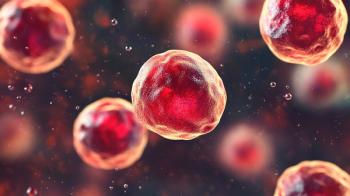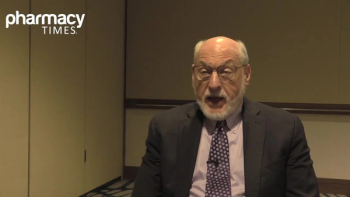
Highlighting Cancer Prevention, Risk Reduction, and Genetics in Cancer Treatment
“Providing quality of care in a field of cancer risk, genetics, and prevention revolves around 3 essential interdependent components,” said presenter Erin Wysong Hofstatter, MD.
The key components for cancer risk, genetics, and prevention include application of results, indications for germline testing, and testing updates, according to a session presented at the 2020 American Society of Clinical Oncology (ASCO) Virtual Scientific Program.
“Providing quality of care in a field of cancer risk, genetics, and prevention revolves around 3 essential interdependent components,” said presenter Erin Wysong Hofstatter, MD.
Germline Testing
In the study, the researchers wanted to assess the clinical utility of identifying germline alterations in cancer susceptibility genes for targeted therapeutic interventions in a pan-cancer patient population.
By using a subset of pan-cancer MSK-IMPACT patients who consented to additional germline testing, 88 genes were analyzed in addition to a medical record review of pathogenic/likely pathogenic (P/LP) patients to assess use of targeted treatment. Out of 11,974 patients between 2015 and 2019, 7.1% harbored a P/LP alteration in a targetable gene. Meanwhile, 44.4% of patients received targeted therapy based on germline results. Overall, 58.1% of Lynch patients received therapy irrespective of microsatellite instability status.
“Our study represents the first comprehensive assessment of the clinical utility of germline variants for targeted therapeutic interventions in advanced cancer patients,” Hofstatter said.
When it comes to the emerging indication for germline testing, this is equivalent to selecting cancer treatment in the advanced setting, she noted.
“Know your test,” Hofstatter said. “Tumor sequencing is not a substitute for comprehensive germline testing.”
Testing Uptake
In testing uptake, germline genetic testing among patients, both affected and unaffected, remains poor, according to Hofstatter. “Only 30% of an estimated 35,0000 BRCA-positive cancer patients have been diagnosed with a genetic mutation, and up to 98% of Lynch carriers have yet to be identified,” Hofstatter said.
Barriers in genetic testing uptake for the patient and provider include lack of knowledge, cost, and fear of discrimination. The next 2 abstracts detailed by Hofstatter were done to evaluate the completion of video-education (VE) or in-person pretest genetic counseling (GC) over time by a randomization arm and to test whether pre and/or post-test GC is needed to optimally deliver online accessible genetic testing.
The first abstract found that there was a high uptake of intervention in both GC and VE and a high completion of genetic testing with no difference by arm. Meanwhile, the second abstract found that the completion rate was highest in the 2 arms with no pre-test counseling, with support of the use of a genetic testing paradigm providing individualized post-test genetic counseling only for patients with positive results and for those patients who request additional counseling.
Application of Results
Most genetic testing for cancer susceptibility is done using multigene panels, according to Hofstatter. The identification of pathogenic variants (PV) with a risk of ovarian cancer is > 5%.
“Variants of uncertain significance should not be used to alter medical management recommendations, and PV in other genes are not associated with a risk of OC >5%,” Hofstatter said.
The aim of the last abstract was to help describe the use of preventive, or risk-reducing, salpingo-oophorectomy (RRSO) among individuals with different test results and how use varies across personal and family history. The study found that the majority of patients reported that RRSO was either recommended or discussed as an option by their provider. Additionally, further data are needed on communication between patients and providers regarding the implications of genetic information and management options.
Hofstatter concluded that the 3 key components to provide quality care in the field each are important for patients with cancer and are actionable points to make. For example, in terms of germline genetics, understanding the germline component of tumor testing of choice can truly affect cancer treatment.
For pre-test video counseling, this type of testing is feasible and acceptable to patients, with the help of a local GC team.
“Ask yourself: how might this enhance testing uptake in your practice?” Hofstatter said.
Lastly, Hofstatter emphasized that individual management must be based on accurate risk assessment.
“There is a responsibility of the provider to understand the implications of testing results, whether positive or not,” Hofstatter said. “Stay updated by reviewing NCCN guidelines, ASCO guidelines, and watching the ASCO Annual meeting.”
REFERENCE
Hofstatter, EW. Cancer prevention, risk reduction, and genetics. 2020 ASCO Virtual Scientific Program.
Newsletter
Stay informed on drug updates, treatment guidelines, and pharmacy practice trends—subscribe to Pharmacy Times for weekly clinical insights.

















































































































































































































